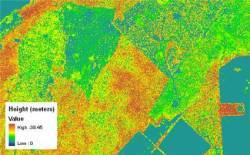 This is a great way to open the new website. “Where am I?” is being replaced by, “Where am I in relation to everything else?”, and location-aware thinking, services and businesses are on the increase. As the Department of Labor is working with other GIS societies and institutions to develop content standards for required skills for these new employees, it is worthwhile to look back and see how far, and from where, we have come.
This is a great way to open the new website. “Where am I?” is being replaced by, “Where am I in relation to everything else?”, and location-aware thinking, services and businesses are on the increase. As the Department of Labor is working with other GIS societies and institutions to develop content standards for required skills for these new employees, it is worthwhile to look back and see how far, and from where, we have come.
In that vein, the Penn State Public Broadcasting is developing the Geospatial Revolution Project, an integrated public service media and outreach initiative on the brave new world of digital mapping. Check out their video, which stars our very own 2009 CNR Citation winner Kass Green.
 voted the favorite.
voted the favorite.





